Meet the Black-billed Magpie (Pica hudsonia), also known as the American Magpie, a captivating bird species that calls the western half of North America their home. With a highly adaptable nature, these birds can thrive in a variety of environments and conditions. Standing a bit bigger than jays, the Black-billed Magpie boasts a stunning appearance with their iridescent black and white feathers. Read on and learn more about these intelligent creatures!
On this page
Identification
Black-billed Magpies have an overall black-and-white plumage with deep blue or greenish iridescence on their wings and tail.
See similar birds: Black birds with white bellies
Their upper parts, including the head, back, upper breast, and long tail are mostly black. However, they have two white stripes on the back resembling backpack straps and their belly is also white. They have a slightly curved black bill, black eyes, and slender black legs.
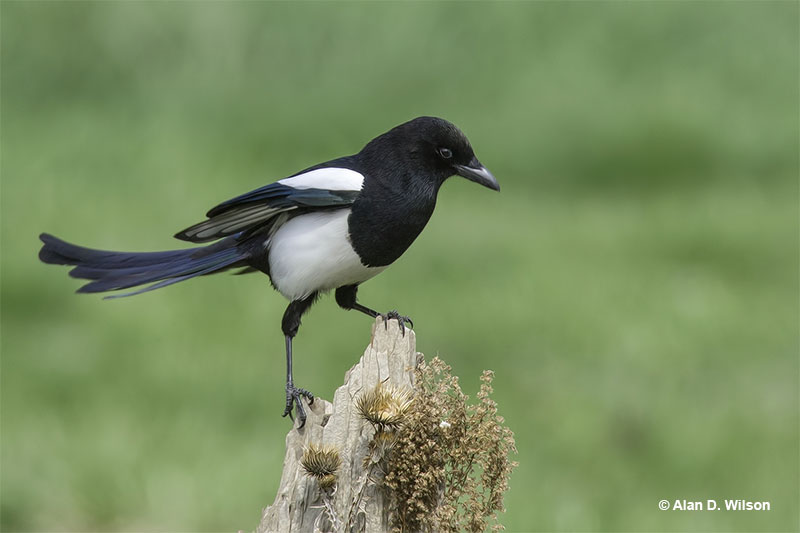
The male and female Black-billed Magpies look the same, but you can distinguish them by their size. On average, males are 6-9% larger and 16-24% heavier than females. Overall, these birds can measure 17.7-23.6 inches in length, have a wingspan of 22-24 inches and weigh around 5.1-7.4 ounces.
Black-billed Magpies fly with rowing wingbeats that have short glides or shallower strokes weaved into the mix. The tail appears very long, and it is diamond-shaped when fanned out. You can see the white primary feathers on its wings as well.
These birds gather in flocks and are very social and vocal. They have several calls and even a whispering song that’s mostly soft warbling. Black-billed Magpie’s calls consist of tweets, coos, squawks, chatters, and purrs. The most common chatter can be described as a harsh, raspy, and rapid ka-ka-ka-ka. Individuals living with humans may also learn to imitate human voices.
Food
Black-billed Magpies are opportunistic omnivores, eating everything they can. Their diet includes seeds, grains, nuts, and fruit, but also small mammals, birds, eggs, nestlings, insects and beetles, and small snakes. They feast on carrion and even maggots found on the dead animal.
They mainly forage by walking on the ground and may use their bills to flip over items, such as rocks and hardened cow dung to find food, primarily looking for insects and their larva but picking up seeds and grains as well. They’re also known to steal food from other birds, scraps of prey from terrestrial predators, and raid nests to eat the eggs and hatchlings of other songbirds. These birds may kill small mammals such as mice and voles, but they’re not all bad and murderous. Sometimes they’re quite useful by picking off ticks from large animals, such as cows or moose.
If Black-billed Magpies find a rich source of food, then they may cache some of it for short periods of time. They may even store ticks and unlike other food, they are stored alive and unharmed.
Nesting and Eggs
These birds are monogamous through the breeding season and may form lifelong bonds. They nest in small but loose colonies and the nest site is on average 15-30 feet above the ground on the branches of a tree or large shrub, sometimes on utility poles or even in deserted buildings.
Black-billed Magpie’s nest is a huge globular structure that varies in size, although it’s typically around 30 inches high and 20 inches wide. It has entrance holes on both sides. The nest is constructed of twigs and the nest cup is secured with mud or manure and lined with soft hair and vegetation, such as weeds and various grasses. The pair builds the nest together, with the male building the exterior made of sticks and the female bolstering the interior with mud and lining it with soft vegetation.
The female lays 1-9, on average 6-9 tan or greenish gray eggs that are heavily spotted with brown. The eggs are 1.2-1.5 inches long and about an inch wide. The female incubates the eggs alone for 16-21 days while the male feeds the female and guards the nest. Both parents feed the nestlings and the young leave the nest on average 25-29 days after hatching, becoming independent at about 10 weeks of age.
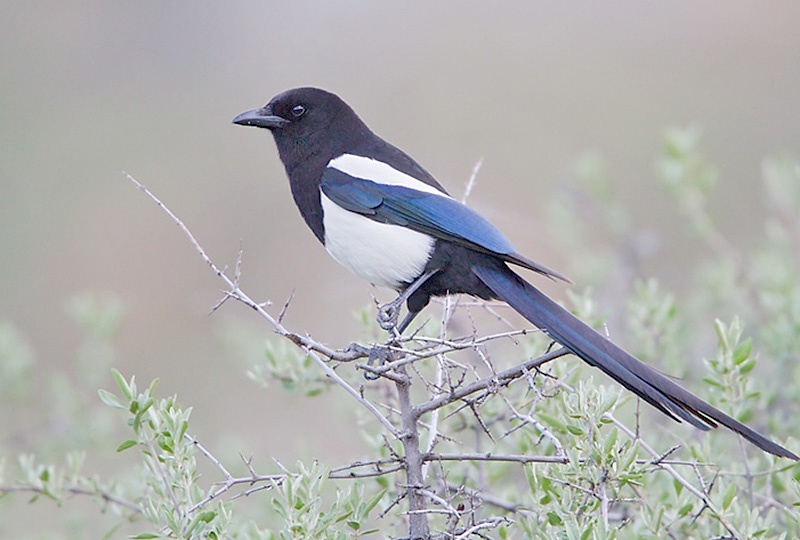
Photograph © Glenn Bartley.
Current Situation
Black-billed Magpies range in the western half of North America from coastal southern Alaska through the Rocky Mountains down south to all the Rocky Mountain States, including New Mexico and northern Texas. They are mostly permanent residents within their range, although some move southwards or to lower elevations in winter. This species prefers colder, semi-arid steppe climates.
These birds can be found in various places from forests to human settlements. Black-billed Magpie’s habitats include rangelands and wooded countries with open fields that are usually close to water. They need wooded areas and shrubby thickets for nesting, where the trees and shrubs are strong enough to carry their quite bulky nests. Meadows and clearings are perfect for foraging. They can also be found near rural human settlements, such as grain farms since they provide food, and suburban areas. However, they avoid unbroken forests and deserts.
Even though in the 1900s, they were treated as pests and people tried to reduce their population, this species is still widely common and very widespread. It is listed as a species of least concern in the IUCN Red List.
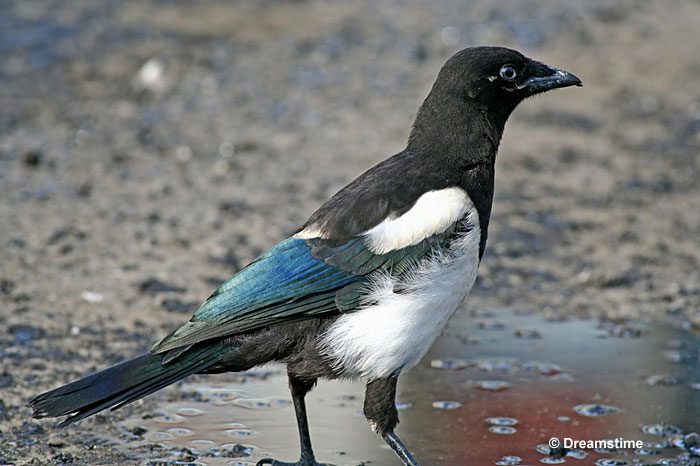
Facts
- Black-billed Magpies are intelligent birds. They can learn to mimic other sounds and human voices and can remember and recognize faces. They’re also one of the few species that can identify themselves in the mirror.
- Black-billed Magpie’s nest is very large and can take up to 40 days to build.
- Black-billed Magpies and magpies overall have exceptional hearing. They can hear worms and grubs moving underground and when you see a magpie turning its head from side to side while foraging on the ground, it’s probably listening in on the location of its lunch. They also use scent to locate their food, which is an uncommon trait in birds.
- Black-billed Magpie’s spiritual meaning is connected to Yin and Yang – the duality of life. Its black-and-white plumage embodies both the good and the bad and in connection to that, Black-billed Magpie symbolism also has two sides. On the one hand, they symbolize wisdom, right decisions, joy, and creativity but on the other hand, they can be a sign of deceit.
Similar Species to Black-billed Magpie
Black-billed Magpies have only two similar species in North America: The Yellow-billed Magpie and Canada Jay. However, we also decided to introduce the Eurasian Magpie and Magpie-lark since they’re very similar and you might stumble across them on your travels.
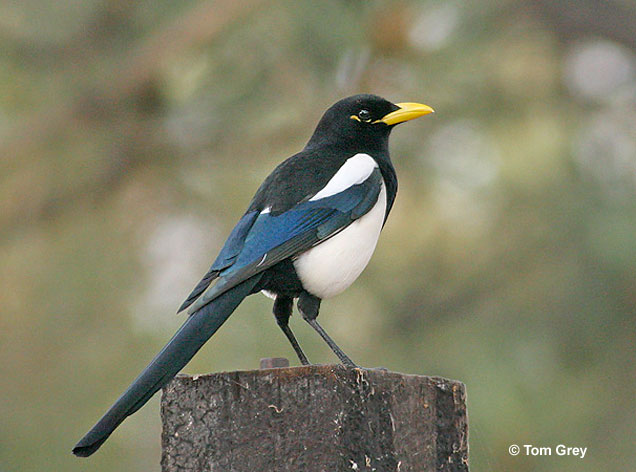
Yellow-billed Magpie
Yellow-billed Magpie – Yellow-billed Magpies have a yellow bill whereas Black-billed Magpies have a black bill.
Otherwise, they’re nearly identical. However, Yellow-billed Magpies are only found in the Central Valley of California.
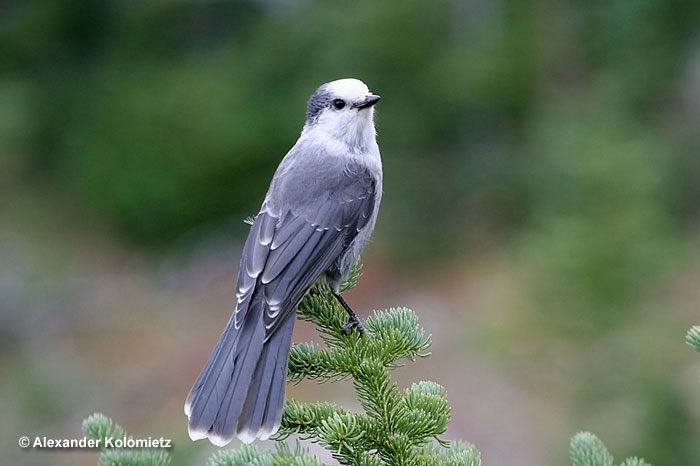
Gray Jay, also known as Canada Jay
Canada Jay – At a first glance, you might confuse a Canada Jay and a Black-billed Magpie, however, Canada Jays are smaller and mostly gray.
Their bill is much smaller, and they lack the white on their wings.
Although their tail is quite long in relation to their body, it’s not as long as that of a Black-billed Magpie’s.
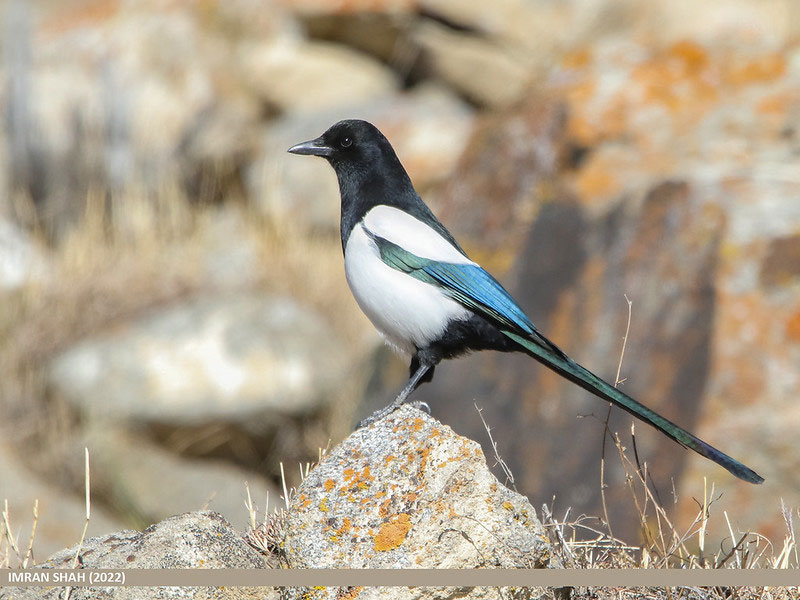
© Imran Shah
Eurasian Magpie – Eurasian Magpies range throughout the northern part of the Eurasian continent.
They look nearly identical to Black-billed Magpies and only have slight differences in their vocalization and behavior.
So if you’re traveling in Europe, for example, and think you saw a Black-billed Magpie, it was the Eurasian one instead.
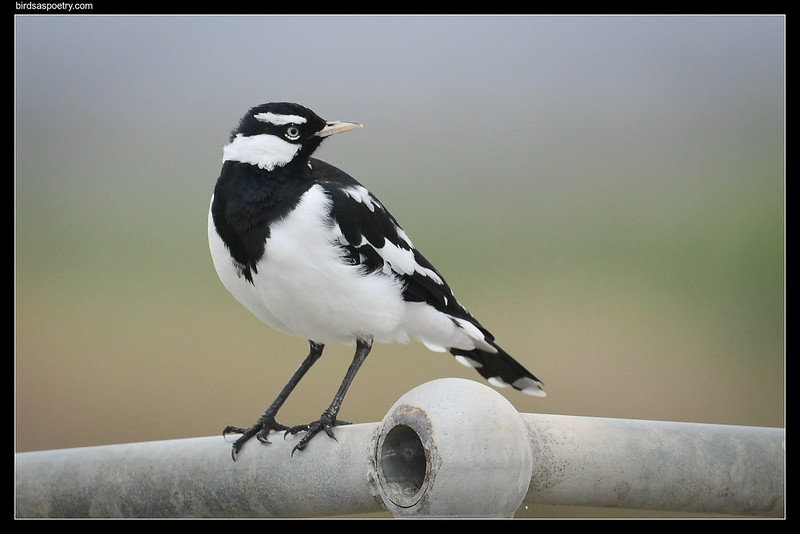
©I Am birdsaspoetry.com
Magpie-Lark – Magpie-Larks live in Australia and are quite similar to Black-billed Magpies.
However, these birds have more white in their plumage and are significantly smaller in size, measuring only 9.8-11.8 inches long.
They have light-colored beaks and shorter tails as well.
People Also Ask
Where can I find Black-billed Magpies?
Black-billed Magpies are widespread throughout western North America. You can find them in grasslands, meadows, edges of forests, and shrubby thickets, but also in suburban areas and rural settlements.
Are Black-billed Magpies rare?
Black-billed Magpies are a common species across the western part of North America, even though they were treated as pests and farmers tried to control their population.
Are Black-billed Magpies aggressive?
Black-billed Magpies are usually not aggressive. They can fight amongst themselves at sources of food or may swoop at humans during the breeding season when they feel that their nest or younglings are threatened.
What does seeing a Black-billed Magpie mean?
Seeing a Black-billed Magpie may be either a good or a bad sign. It is often considered to be an omen of good fortune and a sign to move ahead in your life but on the other hand, it can also signify deception and fraud in your life.

